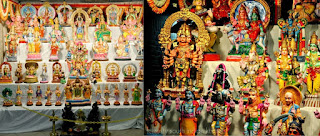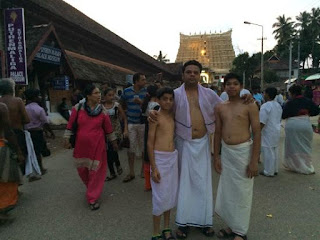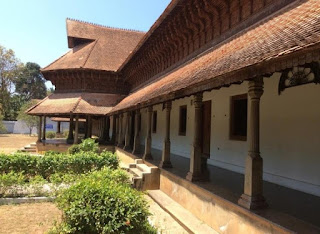Introduction
Though Chilli is most commonly associated with Indian staple for ages, the importance of the #turmeric or Haldi, as is known in India, is not that publicized among the people. However, its importance has once again come to the reckoning during the time of global pandemic #COVID-19. It is surprising and ironic to know that turmeric’s health benefits were unknown to the Indians even when they are using it to make different cuisines at home. People make a solution of #Haldi and salt to dip the vegetables and fruits before their use. It is believed that the solution removes the bacteria and other harmful chemicals that may have been on the surface of the treated fruits and vegetables.
Origin of Turmeric
A mainstay of all Indian kitchens, turmeric is extracted from an underground stem, just like ginger. It is cultivated throughout India. As it grows up, it accumulates all the required chemicals for the well-being of human beings. When we grew up, the grandparents used to talk a lot about its benefits and made us drink the milk laced with turmeric powder. Even, Indian System of Medicine, Ayurveda gives it as a recipe for sun tanning, bruise, or chronic cold. In this article, let us see whether these claims by elders are with good reasons to backup or not and the way by which the golden milk is properly cooked.
Preparation of Golden Milk
The best way of preparing #golden milk is by the addition of a teaspoon of turmeric powder to hot milk and adding a dash of sugar or honey to it. The experts believe that the maximum benefits of this healthy concoction can be obtained if it is drunk without any sweetening agents. To make the concoction healthier, it is better to add fresh rhizome paste to it. However, everything depends upon the quality of turmeric powder used. Some people prefer to call it ‘turmeric latte’ as they feel that it tastes awful. The golden milk can indeed taste awful if it is not prepared properly.
There are other ways of making the golden milk tastier, especially for
those who hate its original taste. The golden milk made using the following method tastes so delicious that you feel like having a cup of coffee. It is
done as follows.
- Make an equal-mixture of
water and milk and bring the resultant mixture to a simmer.
- Separately, melt some ghee
in a pan and sprinkle a half teaspoon of turmeric powder into the molten
ghee.
- Continue heating the mixture, until it smells aromatic.
- Take the pan containing ghee and turmeric powder off the flame, and add cinnamon, pepper, and nutmeg.
- Mix
the resultant mixture by shaking it over the flame.
- Pour the water-milk mixture onto the pan and mix it thoroughly.
- The flavored mixture of milk in water is then heated to a light boil.
- Add the sweetener of your choice to make it sweet and tasty.
- Take the pan off the flame, and serve it hot to devour its taste.
Main Ingredient of Turmeric Powder
The piperine present in the black pepper improves the bioavailability of curcumin. This combination works even better with some nutmeg and cinnamon in the milk medium. Some people don’t like to drink milk due to various reasons such as allergies and lifestyle choices. During those times, it is always prudent, from a health point of view, to prepare turmeric-based preparations such as golden milk. The nutritive value of milk can be enhanced by using coconut or almond milk.
Health Benefits of Turmeric Powder
The spice itself is an antidote for common ailments like chronic or
simple cold, inflammations and bruises. It is even used as a medicine for skin
tanning and other simple skin ailments. When it is mixed with health drink
milk, its medicinal properties grow at least 10 folds. Lots of researches have
been done on its medicinal effects in different parts of the world. These
researches corroborate with what our grandparents coerced us to believe through
their wonderful preparations as antidotes for common ailments at home. The
posts with headings “golden milk” on Instagram have made it an international
star among the global dwellers.
- Turmeric Powder Stimulates
Immune System: The most important content in turmeric that powers the body’s immune system is curcumin. This wonderful natural chemical has pharmacological properties such as antiseptic, anti-inflammatory, and antibacterial properties. Because of this reason, the consumption of a glass of turmeric powder-laced milk has become a norm for the Indian kids
at home. The kids consuming the golden or Haldi milk get relief from not
only coughs and sniffles but also acquire immunity against further infections.
Seeing the response to various ailments after the gulping of the golden
milk, the lactating mothers, young children, or patients who are recovering
from surgery are given this health concoction to build the body immunity
in Indian households.
- Turmeric-laced Milk Cures the Sick: The reason why the health benefits of the turmeric powder get boosted on mixing with milk is the solubility of its potent chemical curcumin in fat-rich milk. When the turmeric powder-laced milk is ingested, the curcumin present in the turmeric powder gets absorbed along with fat easily in our digestive system. So, after getting into our bloodstream, the curcumin purifies it and flushes out the toxins from the system. Thus a person who is suffering from headaches due to sinus blockage gets immediate relief from it after drinking turmeric milk. The turmeric powder present in the golden milk dissolves the phlegm or mucus and promotes sinus drainage. The main component curcumin also helps in the digestion of food. The regular ingestion of turmeric with milk keeps at bay heartburn and bloating as well.
- Antidepressant Effect of
Turmeric Milk: People taking a cup of golden milk before going to bed get a peaceful sleep in the night. Armed with antioxidant properties,
curcumin protects the internal organs of the human body when used regularly with milk over a longer duration. It is important to remember that the health benefits of golden milk appear only after a certain time.
Hence, it should be used on a long-term basis, not on an SOP basis. The bioavailability of the tryptophan in the brain gets enhanced in the presence of curcumin. Hence, the medicinal properties of milk get bio-magnified in the presence of turmeric powder. Golden milk is
believed to bring the depression down as some research studies have shown.
It can even potentially bring down inflammation relating to mood disorders
too.
- Turmeric Cures Skin
Disorders: The curcumin present in turmeric powder is known to improve the skin complexion of people. This is the reason why the brides-to-be are given a glass of turmeric milk before their marriage. The anti-inflammatory and antibacterial properties of curcumin enable the turmeric to remove acne and improve the skin complexion. The local beauticians in India promote the concoction of turmeric and cow’s milk as
cleanser-cum-moisturizer. A potent creamy mixture of turmeric and malai is used as an instant glow mask to brighten the face. This cream works well for people who have dry to normal complexions. On the other hand, a potent mixture of turmeric with yogurt works well to give brighter skin in
people with oily skin complexion.
Other Variants of Turmeric
Another variant of turmeric, locally known as Kasturi Haldi in South
India is an amazing ingredient in many beauty and facial treatment mixtures.
For instance, the beauticians in India use another Haldi variant by the name amba halid in their recipes
for beauty enhancement. They mix this Haldi variant with malai
and raw rice to make a smooth scrub for the body. This
superb mixture not only hydrates the body but also removes the dead skin to
make a brighter complexion. So, next time if you have any skin issues, it is
better to look for grandma remedies than looking for the instant chemical
solutions that are available online.







































